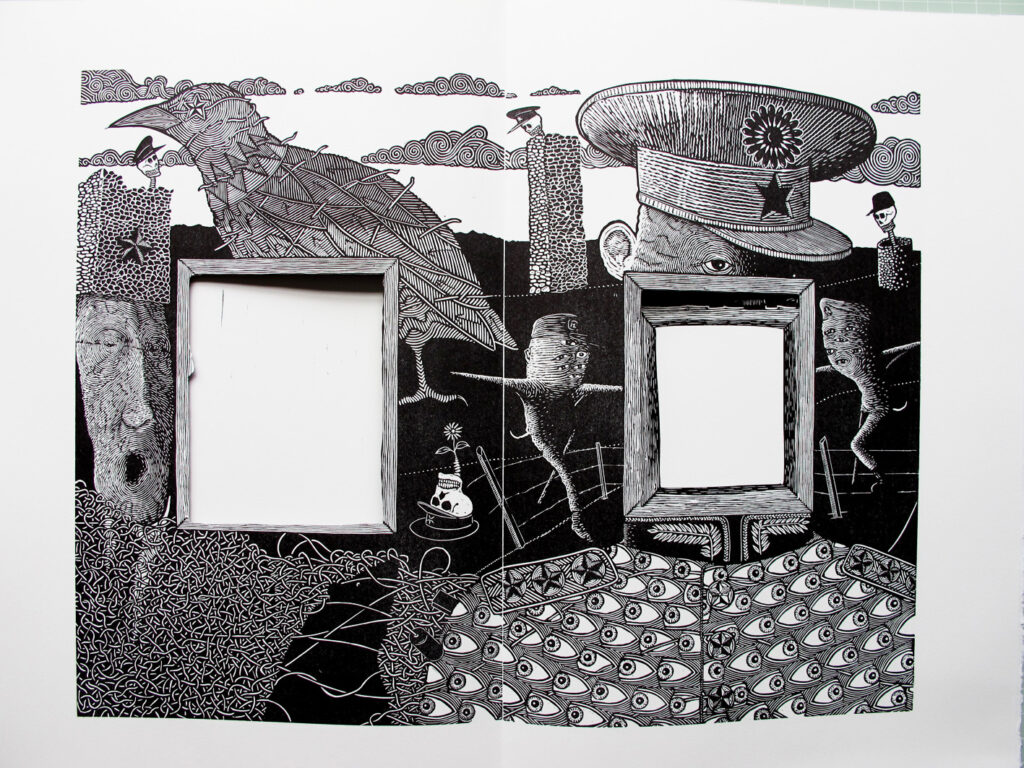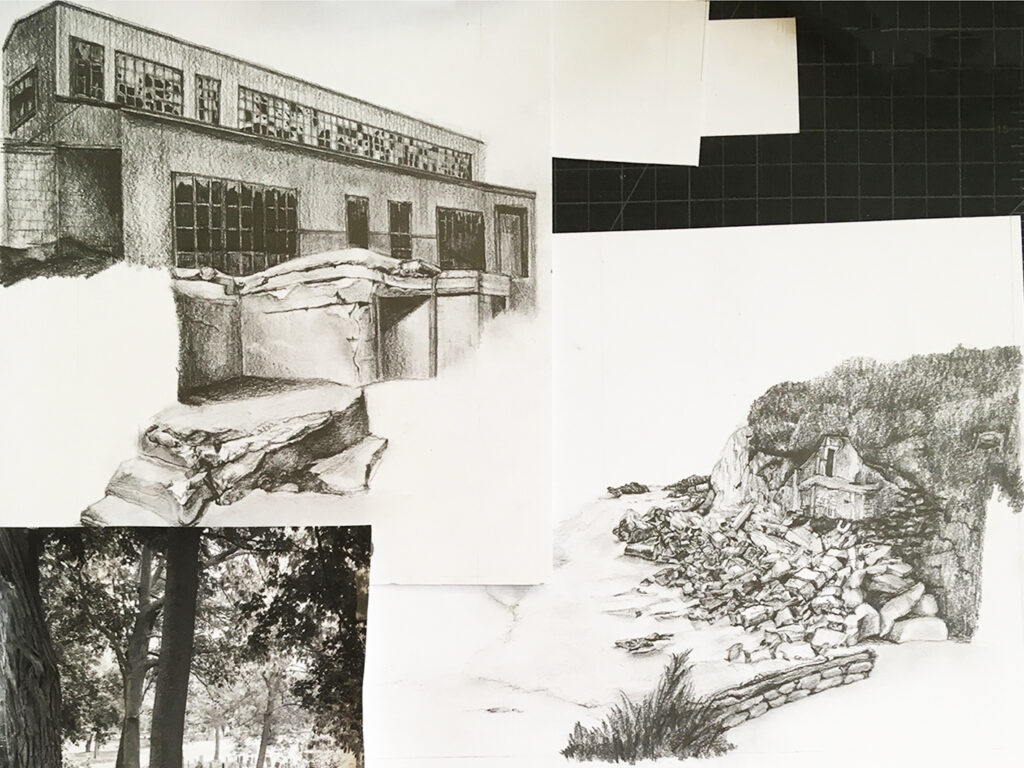AMBruno is an open alliance of artists with a shared interest in the book as medium in art practice. Sophie Loss oversees the initiative.
Each year a call is issued for proposals for books made to a given theme. Those selected embody AMBruno for that year, collectively showing that year’s project.
The group’s 2022 project will be launched at the Small Publishers Fair in October with eleven new books by twelve artists, made in response to the theme of Margins.
The selector was Regine Ehleiter, a Berlin-based curator and art historian. Her research focus is on exhibition history, artists’ publications, conceptualism and contemporary photography.
Regine writes :
“In the current political situation, with a war raging in Europe, what constitutes the centre and the periphery is, again, being called into question. Events taking place anywhere in the continent effect us all. Analogously, many of the submissions suggested a shift of focus, inviting us to turn our attention from the body of the text to the spaces around it, and consider what specific use and role that frame might have, not only as a space for notetaking, but for alternative storytelling, imbued with a life of its own.”
Some of the Margins books are completed; others are in the final stages of production. Here some of the artists give their thoughts on the process of making. Each insights is a snapshot of a work in progress.
Cally Trench writes of her book Marginal Notes on Simon :
“The most exciting part of making a book is when it gets hands-on: choosing paper, printing, cutting, and sewing. But none of that could happen with this book if I hadn’t already spent hours carefully re-creating on a computer the shape of the text in 25 pages of the book I reference – a novel I studied at the age of fifteen and in which I wrote marginal notes for an essay on the character of Simon. The variety of outline shapes has surprised me. You can tell a lot from the shape about whether the text was originally mostly continuous prose or contained a lot of conversation.
I have chosen paper for the inside pages and will soon experiment with different papers for the cover, which references (in colour and design) the original novel. There have been no real difficulties so far in making this book – just lots of small but important decisions, as always.”
Peter Rapp’s book references T S Eliot’s poem The Hollow Men. It is being printed from hand-cut relief blocks. Peter notes:
“The book will be of marginalia in the style of the images that appear in medieval manuscripts. The centre of each page will be removed, leaving just the margins, making the book “hollow”. The images will use the text of the poem to address themes of fragility and emptiness in the age of hyper-connectedness and hyper-consumerism.”
Of her book MA[RGINS], Julie Johnstone writes:
“The idea for my book was quite clear in my mind at the proposal stage so the making process went fairly to plan. I had always thought that the book would have a sculptural, abstract quality.
The book is an homage to the importance of an inner margin or gutter. The imaginary book’s pages have been torn away. The ‘remaining’ margins must hold their own in space, illustrating the value, beauty and necessity of ma – negative space.
It was a pleasant coincidence that the word ‘margin’ can be ‘shortened’ to the word ‘ma’, as if the rest of the word was also torn away. Thus my main decision has been whether to actually put this ‘title’ on the front of the book. I eventually decided to place the title on the front cover.
I also spent a brief time considering a totally different version of the book. I explored the idea of taking an existing book and tearing the text away from each inner page leaving only its inner margins. A book such as The Power of Words by Simone Weil. Although I may still make this book, I felt that this approach took me too far from my original concept of ma, into ideas such as censorship, themes that I wanted to lightly suggest with my original idea, but not be the central focus of the work.”
Printed letterpress on found and recycled paper remnants, bound as an unfolding concertina, Susan Johanknecht and Katharine Meynell‘s manhole: a marginal duet collects :
“ … texts derived from a Cast Iron Services Ltd brochure and manhole covers [overlooked] in plain sight. The manhole-cover as an indication of the margin between under and over-ground. To be read as a two-sided text, printed in margins, alternating between two voices.”
Maddy Rosenberg‘s Margins: the outside limit and adjoining surface of something will be a complex relief assemblage of buildings and sites, forming a theatrical setting. She says :
“The maquette is a collage of photographs I took of geographic margins, of disparate places along the edges of a neighborhood, of a city, of a landmass. But the edition is hand drawn, with each page then scanned and photoshopped together. The pages are shaped by the imagery and when opened and completely unfolded, reveal a terrain that moves along the margins of habitation. The edition will be digitally printed, two sided, and maintain the monochromatic tonality that unites the disparate elements, with the upper contours hand cut.”
On exhibition all the books’ relationship to each other subtly changes with each new display, as they are placed, and re-placed in different positions. As does the engagement of the readers also evolve, picking up one book, then another, maybe perceiving allusive connections from one to another, and to the collection as a whole.
The other artists taking part in Margins are Karen Blake, Philip Lee, Linda Parr, Mireille Ribière, Maria White and me.
John McDowall, August 2022










